Felt Paper Vapor Barrier

Felt paper vapor barrier | Felt, or tar paper, has a proven track record of success as a water barrier. But what about water vapor coming from the inside of the building? Copyright 2018 Tim Carter
"It's important to realize this permeance rating was achieved just testing a single piece of felt paper on its own. Adding other materials on top of the felt paper could radically change the felt paper's ability to transfer water vapor back out to the atmosphere."
Felt Paper Vapor Barrier? You Bet It Can Be
You may want to know if felt paper is a vapor barrier or vapor retarder. It's a very valid question.
There's no simple answer unless you just consider the felt paper on its own.
What is a Vapor Barrier?
A vapor barrier is a product that would stop all water vapor from passing through it. It's better to use the term vapor retarder as there are many products that slow down the passage of water vapor through them.
A technical white paper produced in 2011 shows that #15 felt paper has a vapor permeance rating of 7. This measurement was derived by using the ASTM E 96 test.
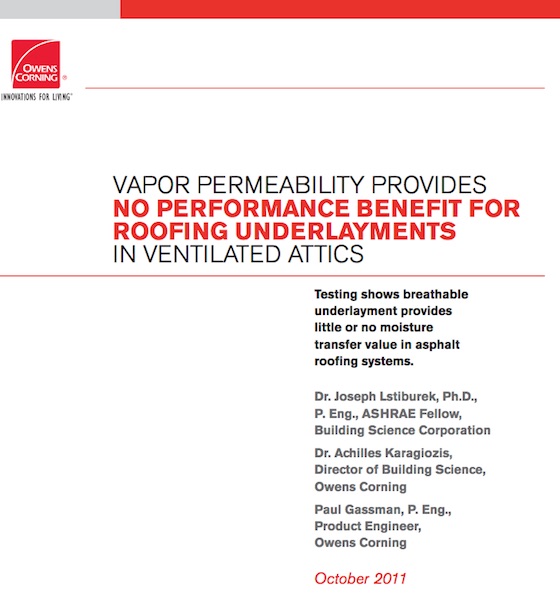
This white paper has very interesting information about the felt paper as a possible vapor barrier. Keep in mind felt paper is almost always covered by different materials that aid or block air flow. Copyright 2018 Owens Corning, Inc.
It's important to realize this permeance rating was achieved just testing a single piece of felt paper on its own. Adding other materials on top of the felt paper could radically change the felt paper's ability to transfer water vapor back out to the atmosphere.
How Does the Permeance Rating of Felt Paper Compare to a High-Performance House Wrap?
High-performance house wraps have much higher permeance ratings. You can check the specs yourself with ease but one that I'm using on my daughter's new home is Delta Vent-SA and it has the following ratings:
- 31 perms using the ASTM E 96-05 Procedure A
- 50 perms using the ASTM E 96-05 Procedure B
Those numbers are much better than the perm rating of 7 for typical asphalt-impregnated felt paper! Another key point is the closer the perm rating gets to 1, the less water vapor the product will transfer to the atmosphere.
Is Asphalt a Vapor Retarder?
It's a good idea to think about felt paper vapor barrier questions in the context of what comprises felt paper.
In its most basic form, felt paper is an absorbent paper that is saturated with liquid asphalt.
This same liquid asphalt has been used for decades as a dampproofing compound on house foundations to slow down water vapor from entering basements and crawlspaces. The normal soil around homes has lots of water vapor in it and this vapor will readily pass through untreated concrete or concrete block.
The asphalt that might be sprayed on a foundation can be pure asphalt or a mixture of asphalt with other ingredients. A thin coating much like you might paint a wall can have remarkable vapor retarding properties.
Karnak makes one product that has a permeance rating of 0.5.
You can scour the Internet and discover many other asphalt-based spray-on asphalt compounds that have a permeance rating of 1.0 or less. That should communicate to you that asphalt can be a very effective vapor retarder.
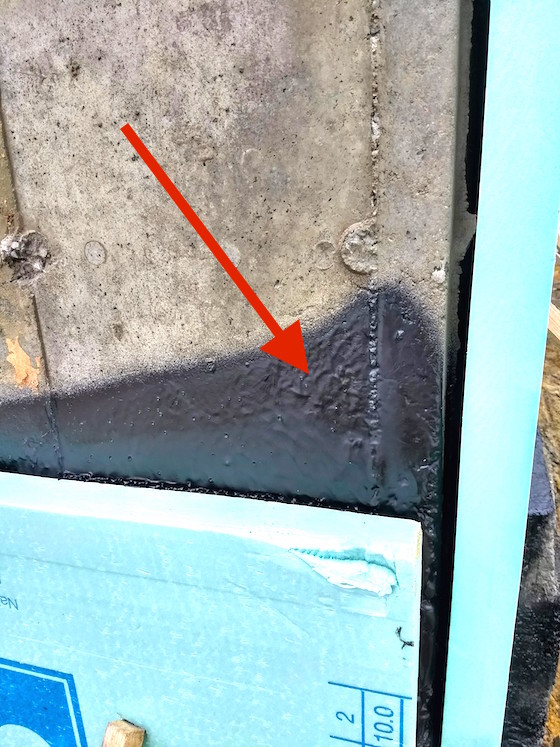
The black goo is asphalt. The red arrow points to the thick coating where it's sagged. Damproofing is applied much thinner like a simple coat of paint. Some asphalt foundation products contain rubber or other compounds that allow the asphalt to bridge future cracks in the concrete. Copyright 2018 Tim Carter
Your own home may have asphalt sprayed on the outside of the concrete walls. This is why your basement doesn't smell moldy.
Felt Paper Under House Siding
The vapor barrier issue gets very complex depending on what covers the felt paper. Some exterior building products like brick and old traditional cement stucco allow water vapor to pass through them with ease.
Newer synthetic stucco is the exact opposite. It blocks the passage of water vapor from inside a home to the outside air in cold climates.
Vinyl siding allows for lots of air movement because of the manner in which the siding is designed and installed.
Fiber cement siding that's painted could be very problematic because latex paints can act as a thin vapor retarder.
Can Felt Paper Covering Wall Sheathing Create an Odor Inside a House?
The answer is yes. This column was inspired by a phone consultation I did with a homeowner whose house was covered with tar paper in 2012 when it was built.
For six years they never had a problem with odor inside the home. Their house is exposed to the blistering infrared rays of sun all day along the New Jersey coast. I know for a fact that some of the exterior surfaces on their home, those facing east, south, and west, can get too hot to touch on cloudless days in June.
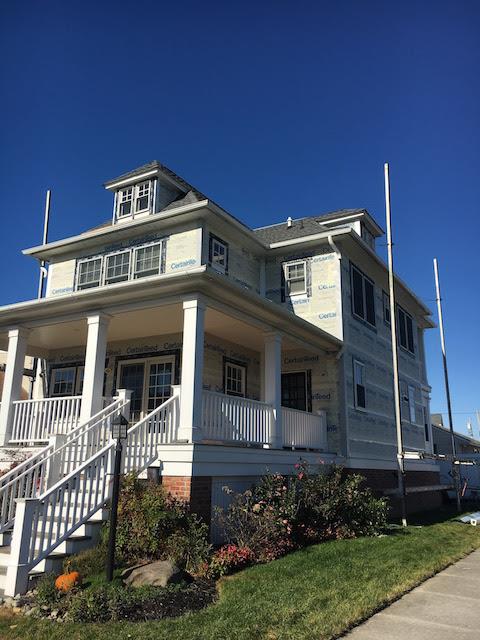
This is the house on the New Jersey shore that had felt paper under the fiber cement siding for six years with no odor inside. As you can see the sun punishes it with lots of infrared light. Copyright 2018 Tim Carter
Read the story about the above photograph in Tim's November 14, 2018 Newsletter.
Fiber cement siding covered the felt paper. The siding was improperly installed and was removed in early November of 2018. The siding contractor then covered the felt paper with CertaWrap, a modern air barrier.
The homeowners immediately noticed a petroleum odor when for six years there was never a problem.
Infrared photography of my own home makes the case that the CertaWrap was causing the problem.
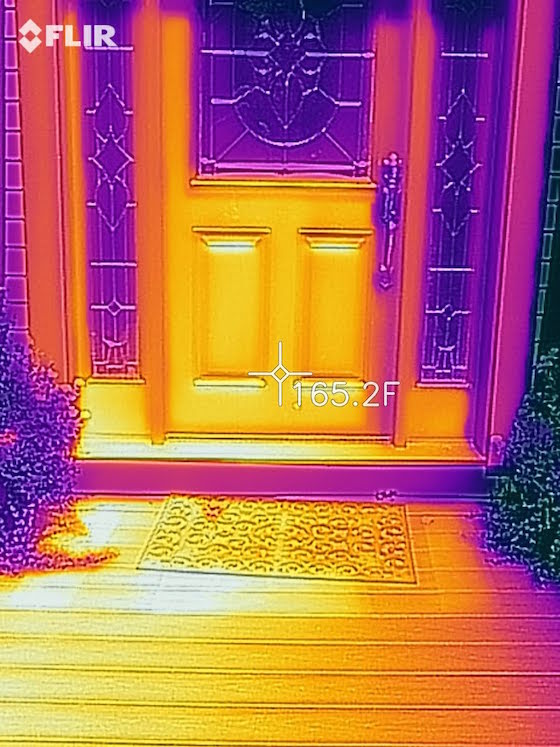
This photo shows how hot exterior siding can get. The surface of the door was 165.2F. Fiber cement siding will get just as hot. It will transfer that heat to the underlying felt paper with no trouble at all. Copyright 2018 Tim Carter
The fiber cement siding could easily reach temperatures of 160F+ and transfer that heat to the felt paper beneath. Previously there was enough air transfer under the siding to vent the petroleum gasses to the exterior.
The Certawrap forced the odor inside. The proof is indisputable.
Can Felt Paper Cause Wood Rot?
Yes, felt paper can cause wood rot if it begins to block water vapor from getting to the outside air. The wood oriented strand board (OSB) that's nailed to the studs can have water vapor condense and become liquid water inside the wall. This water is what fuels fungi that cause wood rot.
Years ago in old homes that didn't have insulation, balloon framing, and were drafty water vapor could evaporate before it caused wood rot. Water can easily get trapped now inside an insulated wall cavity.
Should I Use Felt Paper On the Outside of My Home?
I'd use felt paper on the outside of a shed, barn or other non-heated structure.
My choice on a heated home or building would be a more modern air and water infiltration membrane that readily passes water vapor.
Why Wasn't Felt Paper a Problem on Older Homes?
Old homes, and I'm referencing ones constructed in the late 1800s and early 1900s, rarely had insulation. Many of them had balloon framing which created a chimney from the basement up to the attic in between exterior wall studs.
The old houses were drafty. Water vapor in the houses could readily escape to the atmosphere. Any water vapor that might have started to condense on the backside of the tongue-and-groove 1x6 sheathing would rapidly disappear because of the air movement in the empty wall cavity.
Modern platform construction creates a sealed chamber at each floor level between exterior wall studs.
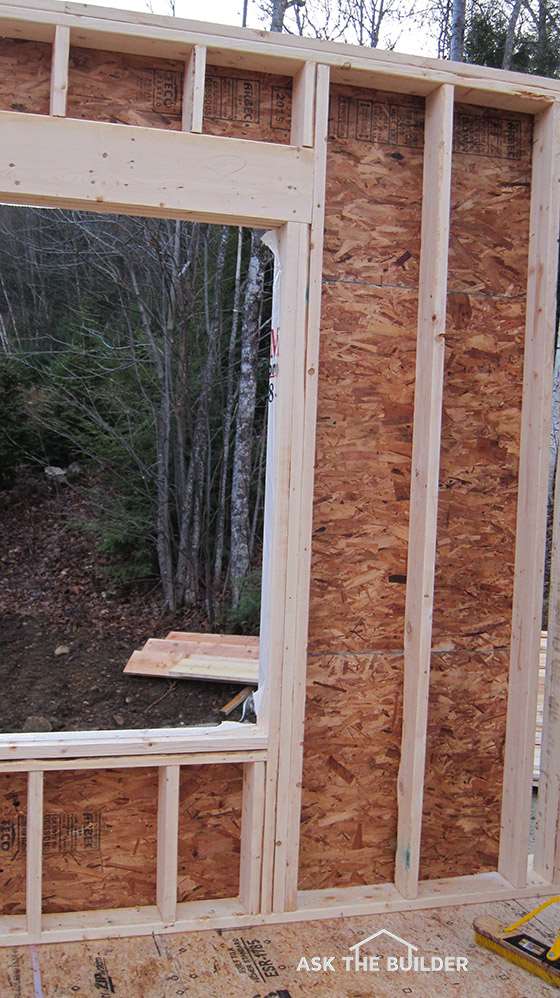
Here's a typical 2x6 exterior wall before anything is put in the cavity. Note how the top and bottom plates block air flow. Once the wall is packed with insulation and drywall is installed, condensation starts to feast on the wall studs and OSB sheathing. (C) Copyright 2018 Tim Carter
The cavity is packed with insulation. There is virtually no air movement.
Should water vapor condense in a modern exterior wall cavity, it can lead to mold, mildew, and wood rot in short order.


22 Responses to Felt Paper Vapor Barrier